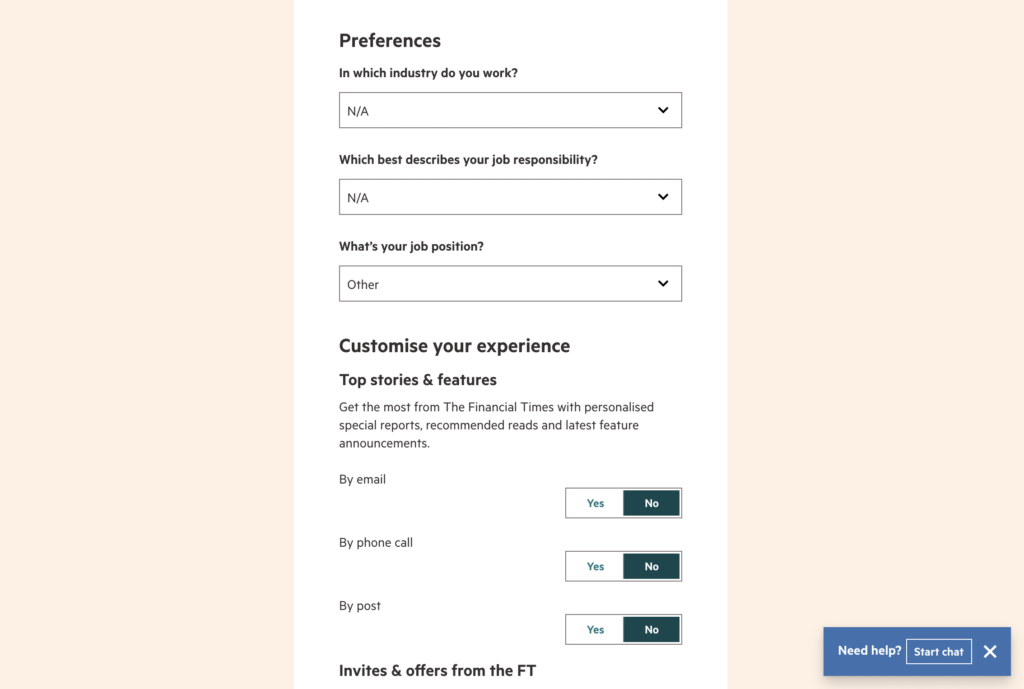Vanguard is usually a “silent giant,” but in this case the company has decided to use a Financial Times article as a forum to publicize its statement refusing to make a real emissions reduction commitment.
Because this is the first time Vanguard is so publicly making an announcement like this — and particularly because the announcement is so unbelievably, appallingly bad — we have a key opportunity to take action by filling the comment section with criticizing comments. We have to move quickly as the Financial Times only leaves comments open for a few days.
The Financial Times is paywalled, but we’ve found a way around it by following the step-by-step process below.
IMPORTANT: You will need to register an account under whatever email address you choose, but you will NEVER at any point need to input a credit or debit card or be charged money in any way!
1: Open an incognito or private browser window.
You can open a new private/incognito window by opening up your preferred browser (Chrome, Safari, Firefox) selecting file on your top menu, and then New Incognito Window (for Chrome) or New Private Window (for Safari or FireFox).
Key shortcut on Chrome or Safari: shift command N
Key shortcut on Firefox: command shift N
2: Google exactly the title of the article by copy + pasting:
Vanguard refuses to end new fossil fuel investments
3: Click the top search result. You will now be able to read the article without encountering the paywall.
4: You may get a pop up about cookies on FT sites. If you do, click Accept & continue.
5: Read the article (if you want! We’ve already given you the summary, so this is optional.)
6: Then scroll to the bottom and click on the Comments button.

7: Click the Sign in and Join the Conversation bar under the comment field.
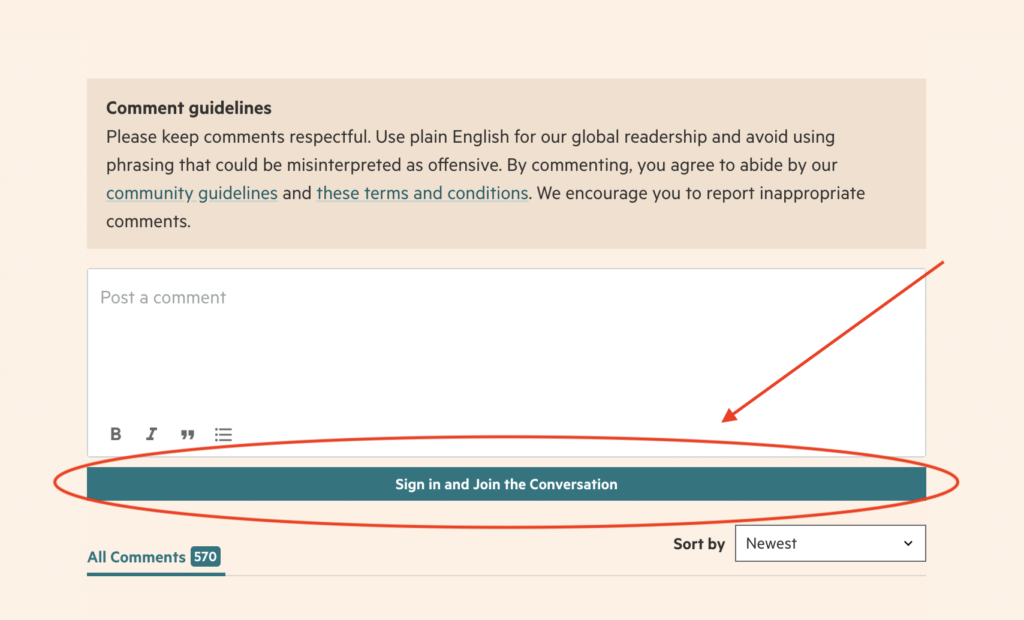
8: Click the Register button.
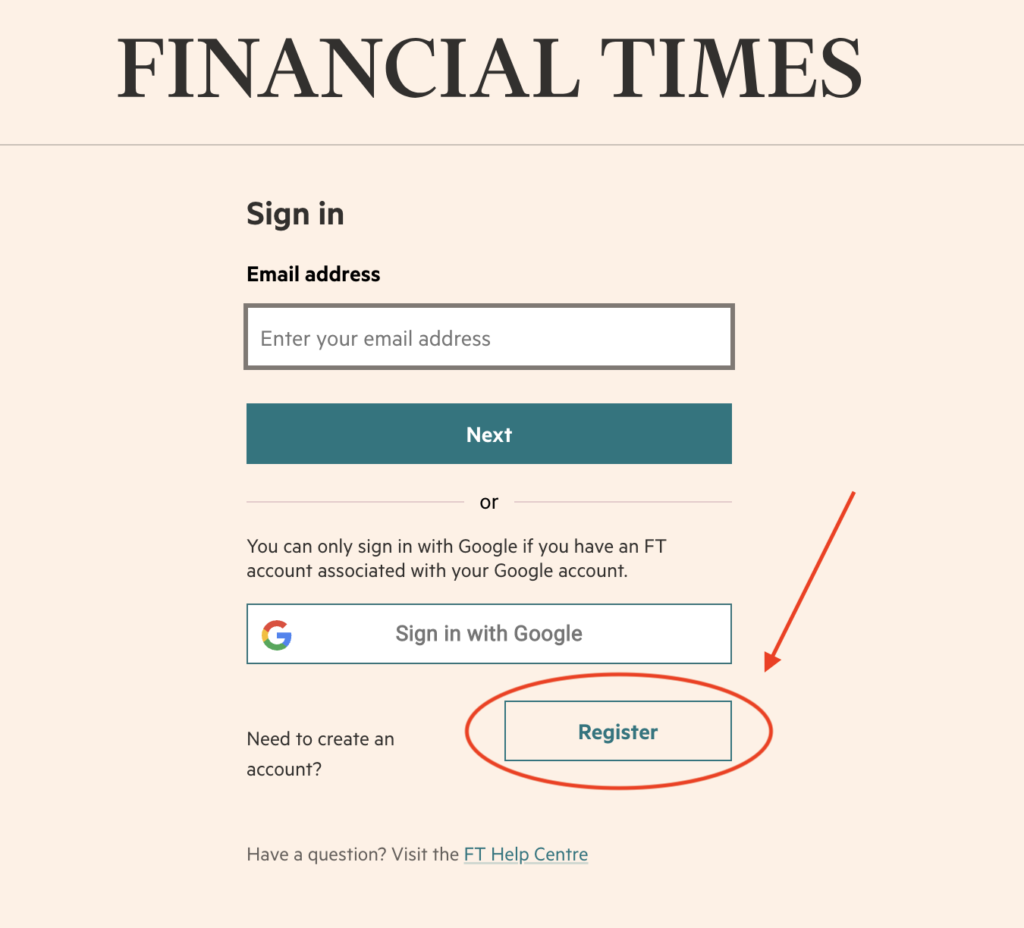
9: You may be taken straight to the registration form (if so, SKIP THIS STEP). If you are taken to a page offering paid subscription, click Continue in the ‘Start with free access’ field to proceed.
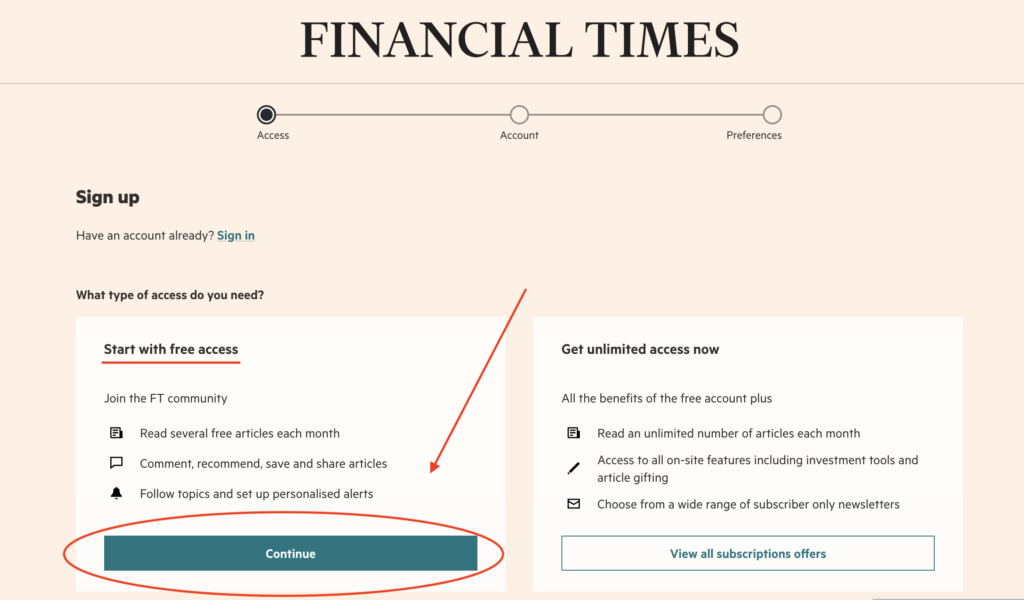
10: Fill out the registration form.
There are two types of registration form that may pop up. One is simple and just asks for an email and password. Once you submit that, you can hit the Skip for now button to proceed with your registration.
The second registration form is longer and asks for a phone number (you can simply enter 555 5555) as well as requires professional details.
All fields must be filled out, but in the drop down menus you can choose N/A for both “In which industry do you work?” and “Which best describes your job responsibility?” and Other for “What’s your job position?”
No need to disclose your actual professional details.
You can also toggle off all the offers at the bottom of the registration form by selecting “No.”
11: Check the box accepting the terms and conditions at the bottom of the form.
12: Then click Create Account.

13: You will be taken to a success confirmation email sent page, you do not need to worry about that. Click the Finish button.

14: If you are automatically taken straight back to the article, SKIP to step 18!
If you are taken to the Financial Times homepage, keep following the steps in order to get back to the article.
15: Click the search icon at the top left of the page to reveal the search field in the top center directly under the Financial Times header.
16: Copy + paste the exact title of the article again into that search field and hit search:
Vanguard refuses to end new fossil fuel investments

17: Click the article from the search results (should be the top result).
18: Scroll down to the comment section again.
19: Write your comment in the comment field.
(Some suggestions for types of comments to write are at the very bottom of this list.)
20: Click the Sign in and Join the Conversation bar again.
21: This time, a pop up window will appear asking you to choose a commenting display name.
22: Choose any respectful name you wish and click the Save button.
(You may have to tweak your display name if your initial choice has already been taken. One easy way to do this is to add a number at the end.)
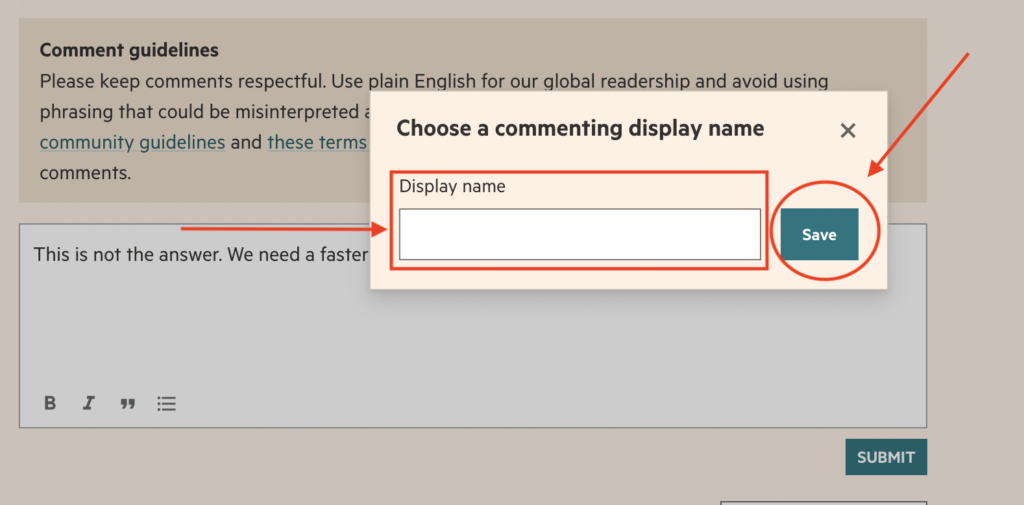
23: Click the SUBMIT button.
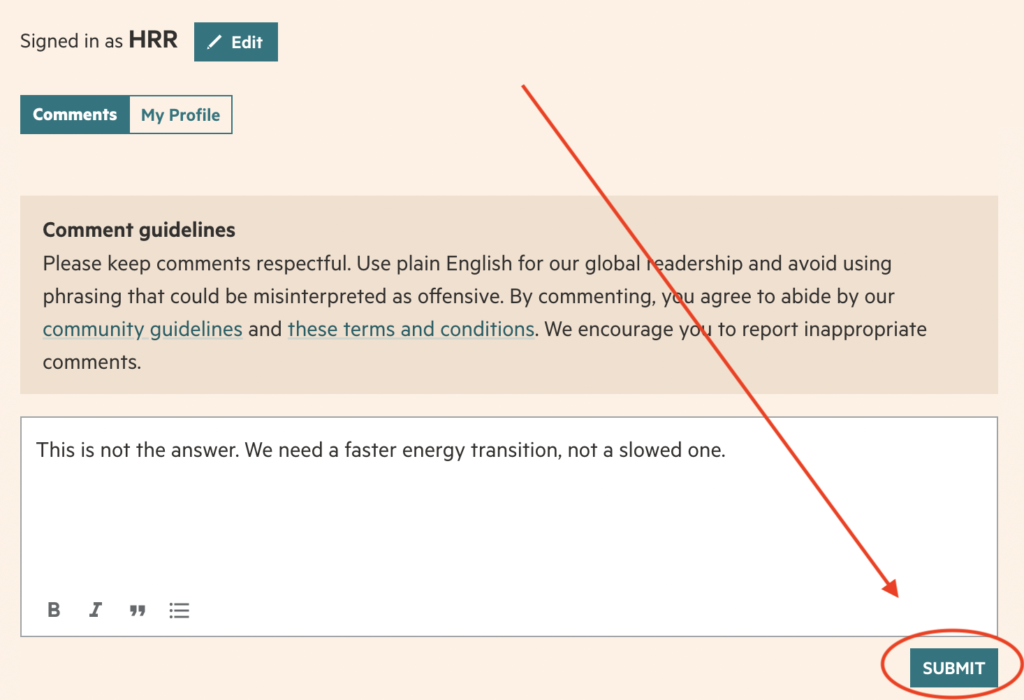
Once you submit your comment, you will see a confirmation message reading, your comment has been submitted and will be reviewed by a moderator.
24: That’s it, you’re done! YOU MADE IT! Congratulations and thank you!!!
A note about the comments themselves:
We’ve found that the most effective comments in situations like these are ones that are not drafted off of suggested copy and instead contain unique thoughts and opinions from impassioned folks like yourselves.
Some ideas for themes for your individually-drafted comments to include:
Your anger (or disappointment or frustration or disgust etc) with Vanguard’s announcement of such a low bar.
Your feelings of urgency and desire for leadership and action from large financial institutions that have the power to make change.
Why you want to make sure that your money and/or retirement is invested sustainably and not fueling the climate crisis.
Thanks to journalists covering this story and hopes for the media to hold asset managers accountable to their climate commitments.
What inspires and feeds your passion to engage in climate-related actions.
Some background info on Vanguard and the Net Zero Asset Managers initiative (NZAM):
Today, May 26, 2022, Vanguard has essentially announced that it is refusing to make a real interim emissions reduction commitment — despite being a signatory of the Net Zero Asset Managers initiative. These commitments are meant to be roadmaps to zero emissions; Vanguard has decided it needs no map at all and doesn’t plan to take proactive action.
Vanguard points to a measly 17% of its actively managed funds — which amounts to LESS THAN 5% of its total assets under management — as net zero aligned and only adds that it “expects” this number to rise by 2030. This falls way, way, WAY behind any of its peers and is completely unacceptable.
With this announcement, Vanguard has failed on every level: it failed to name a firm target, it failed to include the vast majority of its funds (index funds), it failed to commit to any science-based verification of companies’ net zero plans.
All in all, Vanguard has failed to demonstrate any ambition at all to proactively drive emissions reductions in its portfolio, even as the International Energy Agency (IEA) and Intergovernmental Panel on Climate Change (IPCC) sound the alarm that the window to limit global warming to 1.5°C is almost shut.
Additional Resources:

